seaborn.distplot(a=None, bins=None, hist=True, kde=True, rug=False, fit=None, hist_kws=None, kde_kws=None, rug_kws=None, fit_kws=None, color=None, vertical=False, norm_hist=False, axlabel=None, label=None, ax=None, x=None)¶DEPRECATED: Flexibly plot a univariate distribution of observations.
Warning
This function is deprecated and will be removed in a future version. Please adapt your code to use one of two new functions:
displot(), a figure-level function with a similar flexibility
over the kind of plot to draw
histplot(), an axes-level function for plotting histograms,
including with kernel density smoothing
This function combines the matplotlib hist function (with automatic
calculation of a good default bin size) with the seaborn kdeplot()
and rugplot() functions. It can also fit scipy.stats
distributions and plot the estimated PDF over the data.
Observed data. If this is a Series object with a name attribute,
the name will be used to label the data axis.
Specification of hist bins. If unspecified, as reference rule is used that tries to find a useful default.
Whether to plot a (normed) histogram.
Whether to plot a gaussian kernel density estimate.
Whether to draw a rugplot on the support axis.
An object with fit method, returning a tuple that can be passed to a
pdf method a positional arguments following a grid of values to
evaluate the pdf on.
Keyword arguments for matplotlib.axes.Axes.hist().
Keyword arguments for kdeplot().
Keyword arguments for rugplot().
Color to plot everything but the fitted curve in.
If True, observed values are on y-axis.
If True, the histogram height shows a density rather than a count. This is implied if a KDE or fitted density is plotted.
Name for the support axis label. If None, will try to get it from a.name if False, do not set a label.
Legend label for the relevant component of the plot.
If provided, plot on this axis.
Returns the Axes object with the plot for further tweaking.
See also
Examples
Show a default plot with a kernel density estimate and histogram with bin size determined automatically with a reference rule:
>>> import seaborn as sns, numpy as np
>>> sns.set_theme(); np.random.seed(0)
>>> x = np.random.randn(100)
>>> ax = sns.distplot(x)
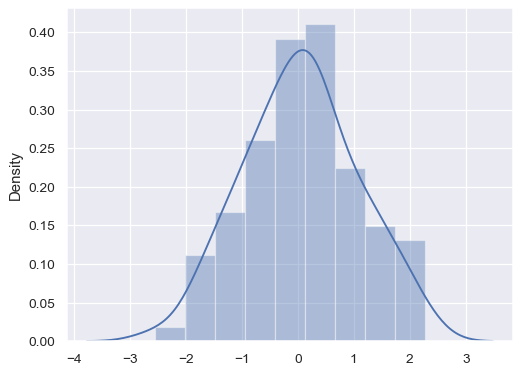
Use Pandas objects to get an informative axis label:
>>> import pandas as pd
>>> x = pd.Series(x, name="x variable")
>>> ax = sns.distplot(x)
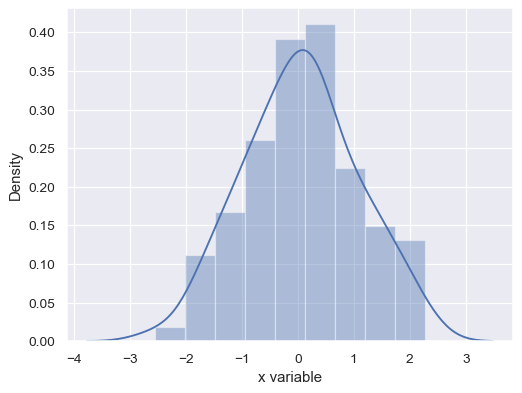
Plot the distribution with a kernel density estimate and rug plot:
>>> ax = sns.distplot(x, rug=True, hist=False)
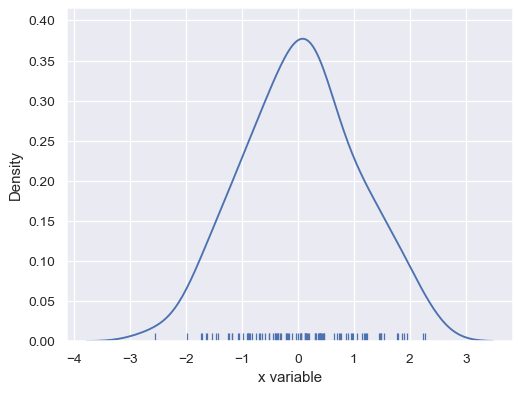
Plot the distribution with a histogram and maximum likelihood gaussian distribution fit:
>>> from scipy.stats import norm
>>> ax = sns.distplot(x, fit=norm, kde=False)
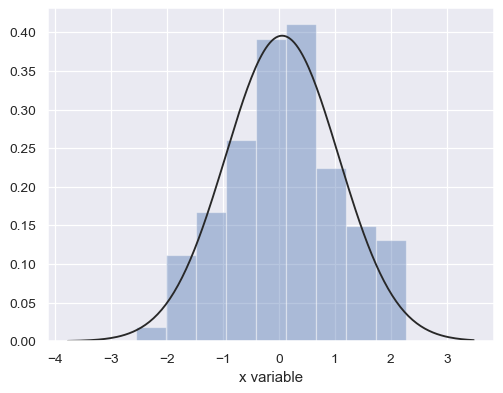
Plot the distribution on the vertical axis:
>>> ax = sns.distplot(x, vertical=True)
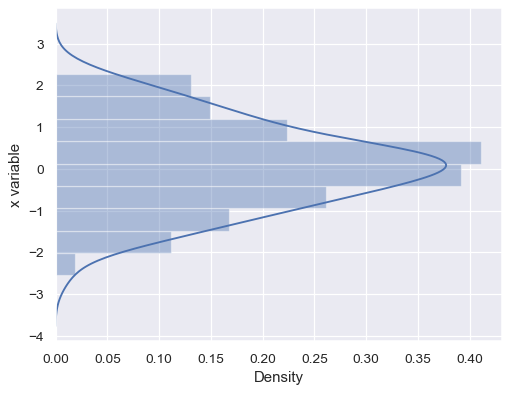
Change the color of all the plot elements:
>>> sns.set_color_codes()
>>> ax = sns.distplot(x, color="y")
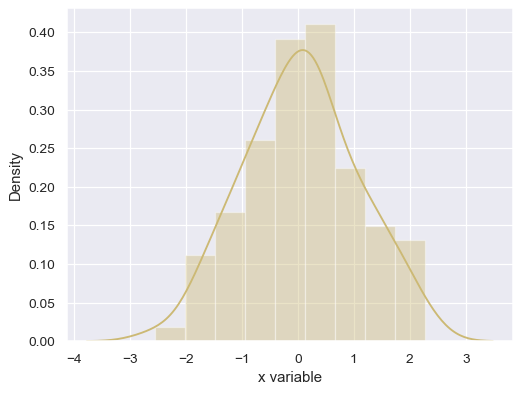
Pass specific parameters to the underlying plot functions:
>>> ax = sns.distplot(x, rug=True, rug_kws={"color": "g"},
... kde_kws={"color": "k", "lw": 3, "label": "KDE"},
... hist_kws={"histtype": "step", "linewidth": 3,
... "alpha": 1, "color": "g"})
